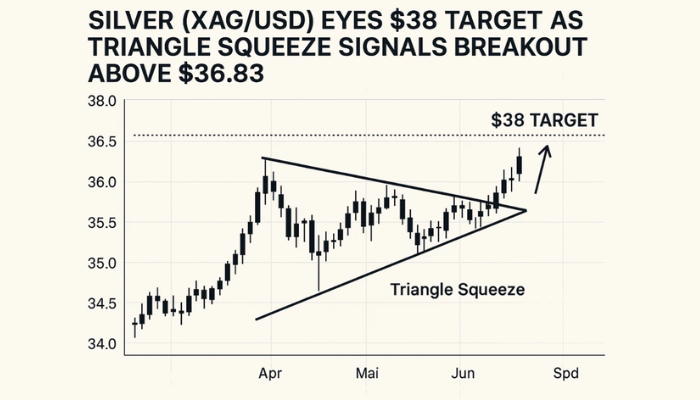Gold Price Forecast: Fed’s Cautious Rate Stance Weighs on Gold—Watch $2,640 Support
Gold prices are hovering below recent peaks after the Federal Reserve signalled a cautious approach to further interest rate cuts.

Gold prices are hovering below recent peaks after the Federal Reserve signalled a cautious approach to further interest rate cuts.

With the U.S. labour market data release expected this week, traders are closely monitoring potential economic shifts that could steer the Fed’s policy decisions.
Gold is lower as expected, but it needs to sell off a bit more, at least towards $2,612 – 2,622 for a better cleansing. Following which, I would expect a sustained rally… pic.twitter.com/ExAw4Ggman
— Rashad Hajiyev (@hajiyev_rashad) September 30, 2024
This article delves into the current market dynamics, key economic indicators, and what it all means for the price of gold.
Federal Reserve’s Stance and Gold Market Reactions
The U.S. Federal Reserve’s outlook on interest rates continues to be a major influence on gold prices. On Monday, Fed Chair Jerome Powell highlighted that the central bank is likely to pursue smaller, incremental rate cuts, indicating that larger rate reductions are off the table for now.
This tempered expectation resulted in a muted response from the gold market, as investors reassessed the likelihood of significant policy shifts.
As the #PCE data was released, the market reacted quickly. The #US dollar index fell 17 points in the short term to 100.39, showing the market's bearish sentiment on the US dollar. Spot gold rose nearly $5 in just a few minutes to $2,670.81 per ounce, sought after by safe-haven… pic.twitter.com/dXm5qwys2A
— Emily🎓🌸 (@CFA___Emily) September 27, 2024
Currently, markets estimate a 64% probability of a 25-basis-point rate cut in November, up from 47% just last Friday, as indicated by the CME FedWatch Tool.
The increase in probability reflects the heightened sensitivity of market participants to upcoming U.S. labour data.
Any deviation from expectations in employment figures could sway the Fed’s stance, making the upcoming ADP employment report and nonfarm payrolls highly anticipated events.
Fed’s Influence on Gold
Gold, a non-yielding asset, tends to lose its lustre in a low interest-rate environment as investors seek higher returns elsewhere.
However, the precious metal’s safe-haven appeal remains intact, particularly amid geopolitical uncertainties and economic turbulence.
Gold: There are numerous longer term tailwinds for gold.
One is buying by Central Banks, which continues unabated.
H1 2024 saw an ↑ of 5% vs 2023. Central bank purchases now account for ± a quarter of total global gold demand, which is double what it was before 2022. ~USGlobal pic.twitter.com/f3s7jfIjEq— Karin Richards (@Richards_Karin) September 30, 2024
Despite this, reduced central bank demand and lower inflows into exchange-traded funds (ETFs) are factors that may curb gold’s price rally in the near term.
Gold’s price is currently trading around $2,638.67, fluctuating within a narrow range as investors digest Powell’s comments and await more economic clarity. A break above or below this range could set the tone for the remainder of the quarter.
Upcoming U.S. Economic Data: Potential Market Movers
With a series of U.S. labour market indicators scheduled for release this week, gold prices are poised for possible volatility.
The ADP employment report, nonfarm payrolls, and unemployment rate data will provide fresh insights into the health of the U.S. economy, serving as key metrics for the Fed’s future rate decisions.
Jobs report and ISM Manufacturing PMI will likely remain key macro data for equities going forward. Interestingly, the two have been the weakest data points over the past two months, missing consensus by ~2 standard deviations on average
BofA pic.twitter.com/LewGY91VAV
— Win Smart, CFA (@WinfieldSmart) September 30, 2024
According to the forecast, the nonfarm employment change is expected at 144,000, a slight uptick from the previous 142,000. Meanwhile, the unemployment rate is projected to remain steady at 4.2%.
Any significant deviations from these numbers could prompt the Fed to alter its current trajectory, thereby influencing gold prices.
Additionally, job openings data from the JOLTS report, set to be released later today, will be closely watched. A weaker-than-expected read in employment figures could bolster views of a more aggressive easing process, which may lend support to gold prices.
Conversely, stronger data could reinforce the Fed’s measured approach, potentially leading to a sell-off in the yellow metal.
Major Events and Forecasts for the Week:
- ADP Employment Report: Forecast: 145K (previous: 155K)
- Nonfarm Payrolls: Forecast: 144K (previous: 142K)
- Unemployment Rate: Forecast: 4.2% (unchanged)
- ISM Manufacturing PMI: 47.6 (previous: 47.2)
These data points, along with speeches from multiple Fed officials, will be crucial in shaping market expectations around U.S. monetary policy and gold’s future trajectory.
Technical Analysis: Key Price Levels to Watch
From a technical standpoint, gold remains trapped within a descending channel on the 1-hour chart, suggesting continued bearish sentiment.
The current pivot point for gold is at $2,641.85, which has served as a key resistance level in recent sessions. Immediate resistance is seen at $2,647.21, followed by $2,649.96 and $2,666.47.
A break above these levels could signal a bullish reversal, invalidating the ongoing downtrend.
On the downside, immediate support is pegged at $2,632.00. A move below this level could open the door to the next support zones at $2,629.75 and $2,620.82.

The Relative Strength Index (RSI) is at 44.93, indicating a moderately bearish tone. Should the RSI fall further, it could imply additional selling pressure, pushing gold to test lower levels.
Conclusion:
Gold is caught in a tug-of-war between macroeconomic factors and technical dynamics. The outcome of this week’s U.S. labour market data will play a pivotal role in shaping short-term price movements.
If employment data disappoints, gold could break above the $2,647 resistance zone, paving the way for further gains. However, stronger-than-expected data may validate the Fed’s cautious approach, increasing downward pressure on gold prices.
Investors should keep an eye on the $2,640 level, as a sustained break below could usher in a deeper correction towards the $2,620 range.
Until more clarity emerges, gold is likely to remain in a consolidation phase, with market participants looking for fresh catalysts to determine the next directional move.
- Check out our free forex signals
- Follow the top economic events on FX Leaders economic calendar
- Trade better, discover more Forex Trading Strategies
- Open a FREE Trading Account


